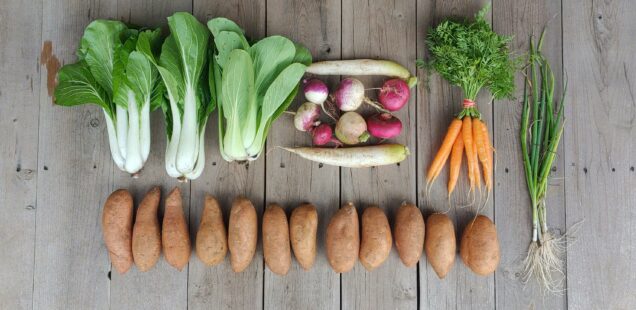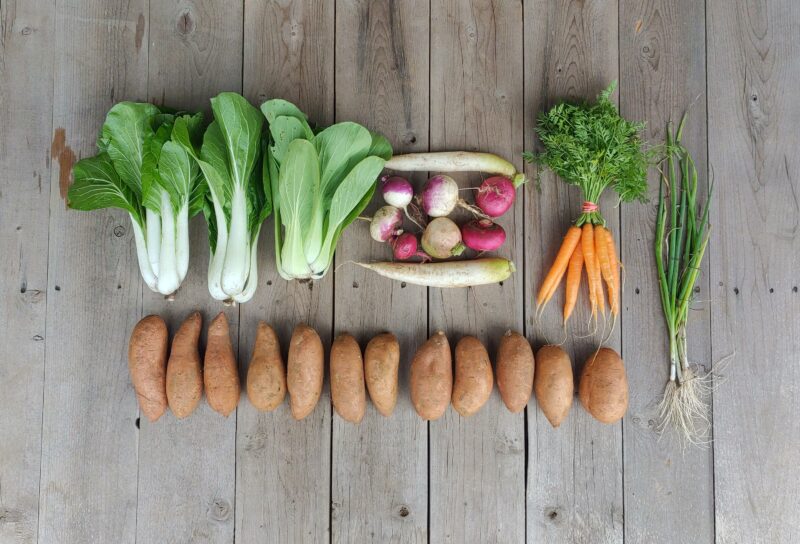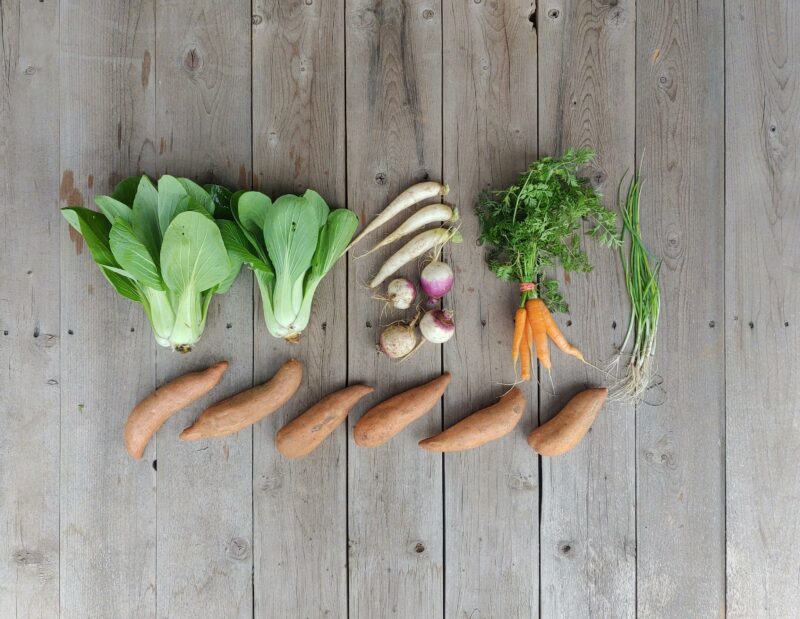
Share Notes Dec 29, 2022
CSA Share Notes:
Guys, we made it to the end of the year and the end of the fall season! We’re so grateful you came along for the ride with us. It was such a difficult growing year, one of the most challenging in our memory, with a winter that yo-yoed in extreme temperatures from Jan-March, unseasonable intense heat starting in April and lasting through early Fall, a super early hard frost in October, and concluding the year with record breaking cold temperatures. We’re worn out! And we are really hoping for a little ease next year. We never know what we’re going to get, of course. And every year provides us with lessons and deeper connection to the earth and for all of that we are grateful.
The next few weeks are planning weeks for us, when we reflect and prepare. We’ll be planning the garden layouts, selecting seed varieties, and reviewing last year’s expenses. Justin will take a wilderness trip in early January to clear his mind and play in the snow, and once he returns, we’ll be starting hundreds of trays of spring transplants in the greenhouse, and planting thousands of onions ready for harvest in June. As always, we’ll be so energized and eager after a few weeks of refocusing. We can’t wait for this coming year, for new beginnings and fresh growth.
Now about this week’s harvest. The winter storm killed off a lot of tender leafy growth that was growing above ground, so you’ll notice there are no bagged salad greens or bunched leafy greens so your boxes are denser, and not filled as high. Still loads of really great crops in there, it’s just heavier stuff, not fluffy stuff that makes the box look fuller.
Here’s this final fall CSA’s beautiful vegetable line up:
Pak Choi — Plenty of these crunchy, sweet Asian cabbages, perfect for a stir fry, a fried rice, a Thai curry, a Japanese soup, or in place of regular cabbage in a slaw or salad.
Green onions — slender and flavorful, these will go great with anything this week.
Sweet Potato — These lovely, nutrient packed potatoes are grown by our friend a couple of miles down the road, Tony Phillips. The light, loamy soil of Van Zandt county is so perfect for sweet potato growing, and Tony’s got it down pat (plus he has tons of space and all the equipment!) so we have him grow sweet potatoes for us. It’s one way we can simplify and focus our energies on the other 60 crops we grow every year. While they are not grown with organic fertilizer, they grow so well here he doesn’t need to spray with any fungicides, and he doesn’t use herbicides, or any post-harvest anti-sprouting chemicals (these are chemical growth inhibitors used on commercial tubers at your grocery store, and they effect the human thyroid and endocrine systems- and they’re the primary reason why you should always try to buy organic tubers, unless you know the farmer well enough to ask if they’re using post-harvest growth-inhibitors!) It does mean that his potatoes do not store as long as grocery store taters. Store them in a dry, dark area, and use them up within a couple of weeks.
Roasting Veggies — Everyone received a mix of a few types of turnip, some watermelon radishes, some daikon radish. This is a tasty hodgepodge of whatever roast-able veggies we could salvage from the big storm. Perhaps add in your carrots or some of your many sweet potatoes, and you can have a delicious sheet-pan dinner.
Carrots — Enough for everyone! Crunchy, sweet, and beautiful carrots. If you manage to delay gratification until actually cooking these beauties, let us know! We can’t seem to get them into the oven, as we and the kids always eat them raw, often before they even get to the fridge, they’re so good. Notice that if you have any damaged tops (from the freeze) that we didn’t remove for you, go ahead and remove and discard them as they can cause your carrots to decompose more quickly if stored together.
Veggie Storage tips:
All your various greens and roots will keep longest stored in the fridge sealed up in produce bags or other airtight containers. For best storage life, sever your roots from their greens and store separately. This will help keep the roots from getting rubbery and the greens from going limp. Everything will need a thorough washing before cooking, but leave the dirt on until you’re ready to use them to prevent spoilage.
We’d love to hear stories and recipes of your culinary adventures this week. Send us a note or post a comment of how you’ve used your CSA share.
Your farmers, Jess & Justin


